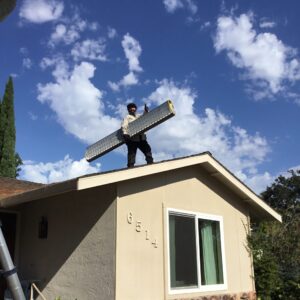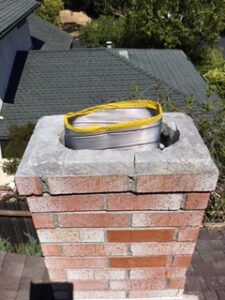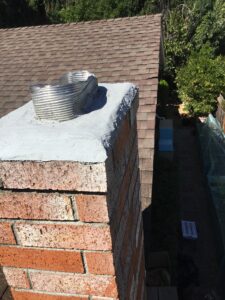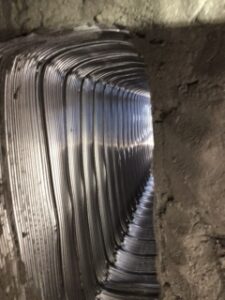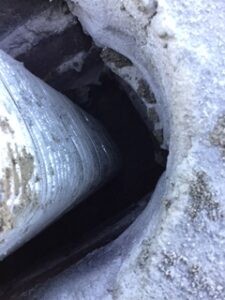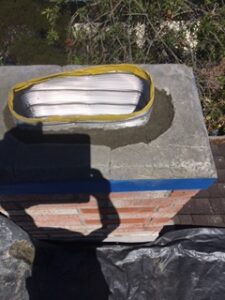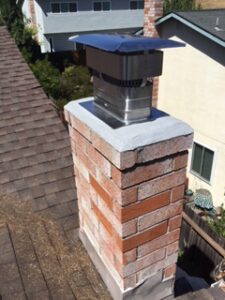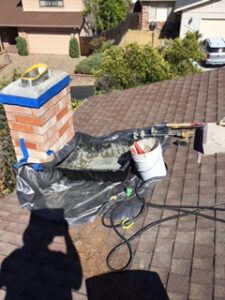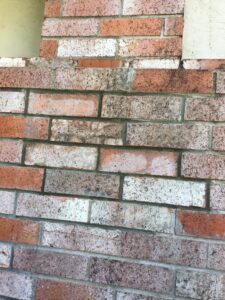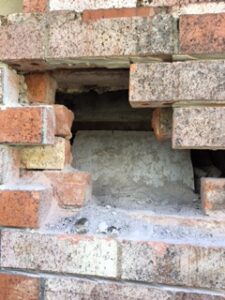Why Relining Is The Answer
Let’s say your flue tiles are not in tip-top shape—what do you do? What if there are large gaps where the mortar has fallen out between the tiles? The solution lies in relining your chimney with a stainless steel, spiral-welded liner that acts like a protective metal sleeve inside your chimney.
When you have your chimney relined, you have a chimney system that will last a lifetime! The warranty is actually transferable to subsequent homeowners provided the newly relined system is properly maintained.
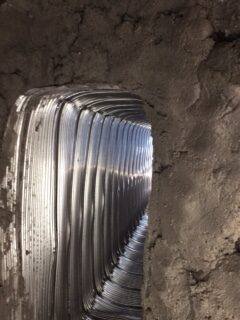
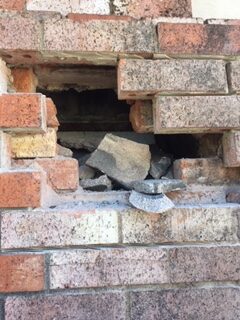
Once the technician has made the necessary measurements and sealed off the fireplace opening, an access panel is installed the back of the smoke chamber and a drill-operated tile breaker is lowered from the top of the chimney. The pieces of terracotta are retrieved from inside the chimney prior to inserting the new metal liner and terminating it securely at top and bottom. Then a mica and vermiculite-based insulation called Thermix is mixed and poured around the metal sleeve. Although similar in consistency to potting soil when wet, Thermix dries like concrete and provides a durable barrier to heat transfer. But, unlike concrete, this insulating material is designed to allow the steel liner to expand and contract with changes in temperature.
Relining also can correct design defects and thereby enhance the performance of the fireplace. When properly constructed the area of the fireplace opening must be 1/10 the area of the chimney flue for optimum draft of rectangular flues (unless the aspect ratio is greater than 2 to 1, in which case the proper ratio is 1/8). A circular flue, which needs a 1/12 ratio, is ideal. Relining insures that this ratio is met as accurately as possible. During a relining a technician will typically smooth out the rough edges of the smoke chamber (a procedure called parging) which facilitates the efficient journey of combustion gases out of the chimney. Since smoke tends to travel in ellipses, corkscrewing up and out of the flue, a relined chimney with a parged smoke chamber will improve the performance of the fireplace.
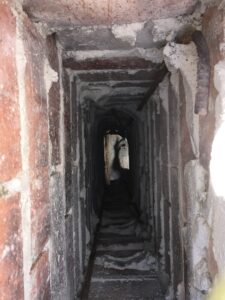
Some of Our Work
